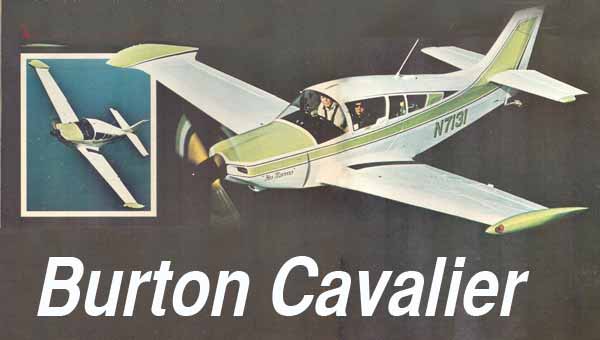
 |
Larry Burton's 160mph
Wooden Wonder |
When Good Isn't
Enough |
There are an amazing number of
homebuilts that the entire world seems to have forgotten about. Here's
one that would stand up to any new design.
As originally configured. the Cavalier 102.5 is a dirt simple, fixed gear, low wing, wood and fabric airplane. It has finely tapered wings, a well-swept tail and general good looks. In fact, it has the kind of looks that go together so well, it somehow seems to disappear in a crowd because nothing about it grabs the eye of passers-by. Burton took care of the eye-grabbing problem all right. For one thing, its Cavalier lineage has all but disappeared. The sharknose cowl is the result of a 5-inch prop extension and the entire schnozz flows cleanly into a revamped canopy/cabin structure. The leaf spring gear has given way to a set of spring struts, oleos and gears that suck the little wheels up to hide them behind clam-tight doors in the bottoms of the wings. In the air, the gear pulled up and the wooden three-blade prop a blur, the airplane has a factory-built air about it. It could be the subtle paint job or the fact that visually it just doesn't fit into the "homebuilt" image. The factory-built feel extends to the inside. When I was aiming my legs down under the panel as I boarded, I felt that I was waist deep in a Bellanca Viking. The finish and interior detailing of Burton's airplane are on a par with any mega-buck factory hotrod. Rather than going with the usual backyard combination of Naugahyde and black paint, Burton did the interior of his airplane (aptly named "His Mistress") in color-coordinated fabrics. It is a subtle, well-designed interior of a type seldom seen in homebuilts. The seating is, as would be expected, just a tad on the tight side; maybe a little better than a C-150, but the visibility is enough to enable a fly to use all 1,000 or so of its eyes. The machine squats so low on the deck that you can always see over the nose, because the ground attitude is like that of a tri-geared airplane with a fatso in the rear seat. With a push of a button, the little 125 hp Lycoming twisted the stubby prop into action and began dragging me down the taxiway. Even though the button-sized tailwheel lets you know every time it crosses a crack or squashes a June bug, it's coupled to the rudder pedals in such a way that you drive it like a C-172. You shouldn't be allowed to log tailwheel time, it handles so easily. "Mistress" isn't exactly a lightweight, weighing in at 1100 pounds empty, so 125 hp isn't going to make a Bearcat out of her, which is just as well. As I dropped the hammer and zipped down the runway, I was a little worried about picking the tail up too far because the shallow ground attitude is very deceiving. So I hoisted the tail just a scosch (a little more than a "bit") and held it there while the airspeed worked its way around to 60-70 mph. Somewhere in there it decided the angle we had was good enough to fly with. The lift curve crossed the gravity curve and we were in the air. I flicked the landing gear switch up and mentally measured how long it took for the gear to come up. I didn't time it, but it's a moderately quick gear. Nothing switchblade-like. but okay. |